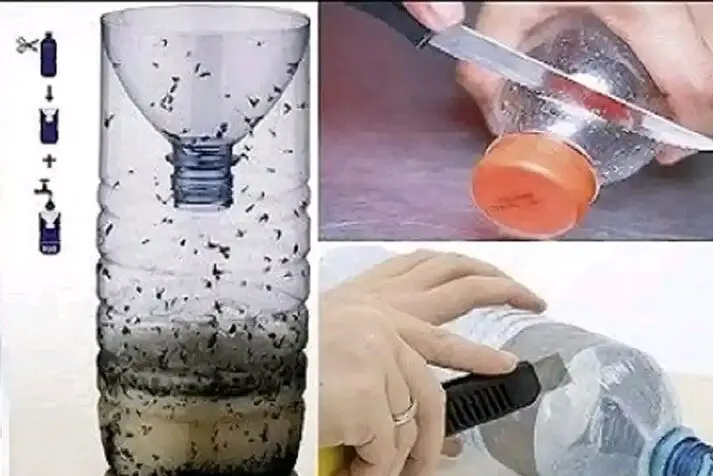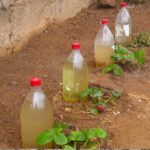
The homemade mosquito trap that you can place anywhere
Let’s see how to eliminate annoying mosquitoes with a homemade trap, simple to make and extremely effective.DIY mosquito trap
The wetlands surrounding our property are the ideal breeding ground for mosquitoes. When the summer sun begins to set, hordes of these hungry pests turn a pleasant evening on the patio into a nightmare. To combat the attacks of these insects, we usually light citronella candles and spray a little insect repellent. But have you ever thought about making a homemade mosquito trap?
Mosquitoes find their victims by tracking the carbon dioxide we exhale. Many commercial traps attract insects by burning propane to produce carbon dioxide, thus attracting these insects. While carbon dioxide attracts mosquitoes as a target, heat is likely to determine where to bite you. Mosquitoes usually choose areas of the body where blood is close to the surface. These are areas such as the forehead, wrists, elbows and neck.
But there is another method of making a mosquito trap that generates a current of carbon dioxide that attracts and traps them. Let’s see the details below.
How does this homemade mosquito trap work?
This simple trap is made from a plastic bottle. Yeast and sugar baits are placed inside the bottle to create a flow of carbon dioxide that attracts insects to the trap.
What do you need:
- Empty 2 liter plastic bottle or similar sized container.
- Razor blade.
- Scottish.
- 1/4 cup brown sugar.
- 1 cup of hot water.
- 1 sachet of active dry yeast.
Method:
Using the knife, cut the top of the bottle just below the area where the neck of the bottle widens to meet the main part of the bottle.
Once You cut off the top of the bottle, you have two pieces that can be rearranged to create the trap: the bottom cylinder and the neck of the bottle.
Remove the cap from the neck of the bottle. Twist the neck of the bottle and insert it into the cylinder, like a funnel.
Do not push the funnel to the bottom of the bottle. Leave enough space between the neck of the bottle and the bottom to add about a cup of liquid and an air space between the surface of the liquid and the lowest point of the funnel.
Use masking tape to secure the funnel. The tape not only holds the funnel in place, but also seals the edges of the funnel to the edges of the bottle. This makes it more difficult for insects that enter the mosquito trap to escape.
Preparing mosquito bait:
Add 1/4 cup brown sugar to 1 cup boiling water. Mix well until the sugar is completely dissolved.
Allow the mixture to cool to 50°C. Be careful, if it’s too hot, the high temperature will kill the yeast. If it is too cold, the yeast will not fully activate.
When the sugar mixture reaches the right temperature, gently add the yeast. Pour the mixture into the bottle (the inverted funnel makes it easier) and the mosquito trap is ready.
Operation:
The yeast and brown sugar create a flow of carbon dioxide that attracts insects to the trap. Hungry mosquitoes follow the trail in the bottle and descend the funnel. When they realize there is no food, they fly across the surface of the piloncillo mixture until they reach the sides of the bottle. The insects then fly up the side of the bottle, but their escape is blocked by the inverted funnel (hence the reason for sealing the edges with duct tape). The little bugs are trapped!
The mosquitoes get tired and fall into the liquid to drown. Sure, a few lucky mosquitoes may find their way through the funnel’s narrow entrance to freedom (and bite again another day), but most insects that enter the trap die there.


